
Register your warranty online at www.MartinLogan.com.
See your local MartinLogan dealer for new construction pre-install brackets (sold separately).
I C 3 | I C 3 - A W | I C 6 | I C 6 - H T | I C 6 - S T
I C 8 | I C 8 - A W | I W 5 - L C R | I W 6
user’s manual

2
Content Check List..................2
Safety Warnings and WEEE Recycling ....2
Square Grilles, Pre-Installation Brackets,
& Fire Rated Backboxes.............3
Protect Your Investment ...............6
Break-In .........................6
General Speaker Placement ...........6
Placement Options (IC3, IC3-AW IC6, IC8,
IC8-AW, IW5-LCR, IW6 Speakers) ......7
Placement Options (IC6-ST Stereo Speaker)
..7
Placement Options (Aimable IC6-HT Speaker)..
8
Connection ......................9
Connecting the IC6-ST ...............9
In-Ceiling Mounting (pictorial) .........10
In-Wall Mounting (pictorial) ...........11
Installation ......................12
Painting the Speaker Grille ...........13
FAQ & Troubleshooting .............14
Warranty and Service ..............15
Specifications ....................16
Safety Warnings and WEEE Recycling
The lightning bolt flash with arrowhead symbol within an equilateral triangle is intended
to alert the user to the presence of uninsulated “dangerous voltage” within the product’s
enclosure that may be of sufficient magnitude to constitute a risk of electric shock.
The exclamation point within an equilateral triangle is intended to alert the user to the
presence of important operating and maintenance (servicing) instructions in the litera-
ture accompanying the appliance.
The fire within an equilateral triangle is intended to alert the user to the potential of
creating a fire hazard if they do not follow the instructions.
The dollar sign within an equilateral triangle is intended to alert the user that they run
the risk of causing damage that could be potentially expensive to repair if they don't
follow the instructions.
WARNING!
• Refer servicing to a qualified technician.
• To prevent fire or shock hazard, do not expose this module to moisture.
• Turn amplifier off should any abnormal conditions occur.
• Do not drive speaker beyond its rated power.
Content Check List
You will find the following items enclosed for your new MartinLogan loudspeaker. Should you
require assistance please call our service department at (785) 749-0133.
______ Install Template ______ Grille Cover

3
In accordance with the European Union WEEE (Waste Electrical and Electronic
Equipment) directive effective August 13, 2005, we would like to notify you that this
product may contain regulated materials which upon disposal, according to the WEEE
directive, require special reuse and recycling processing.
For this reason MartinLogan has arranged with our distributors in European Union mem-
ber nations to collect and recycle this product at no cost to you. To find your local
distributor please contact the dealer from whom you purchased this product, email
info@martinlogan.com or visit the distributor locator at www.martinlogan.com.
Please note, only this product itself falls under the WEEE directive. When disposing of
packaging and other related shipping materials we encourage you to recycle these
items through the normal channels.
Square Grilles, Pre-Installation Brackets, & Fire Rated Backboxes
Square grilles, pre-installation brackets, and fire rated backboxes are available for certain MartinLogan
Installer Series speakers. Contact your dealer for availability.

4
IC6-ST: Wide dispersion rear in a
6.1-channel system using one speaker.
IC6-ST: Rear channels in a 7.1-channel
system using one speaker.
Multiple speakers, distributed audio.
Fig. 2c
Fig. 2b
Fig. 2eFig. 2d
Fig. 1a
IC6-ST: Wide dispersion surrounds in a
5.1-channel system using two speakers.
IC6-ST: Surround and rear channels in a
7.1-channel system using two speakers.
IC6-ST: 2-channel sound from a single
speaker.
Fig. 2a

5
IC6-HT: Non-direct rear channels in a
7.1-channel system.
Min. 12
˝
Min. 12
˝
Min. 12
˝
IC6-HT: Direct radiating surround and
rear channels in a 7.1-channel system.
Min. 12
˝
Min. 12
˝
Min. 12
˝
10
´
-14
´
Min. 12
˝
10
´
-14
´
IC6-HT: Front left, center, and right
speakers.
IC6-HT: Front left and right speakers.
IC6-HT: Non-direct surround channels
in a 5.1-channel system.
IC6-HT: Non-direct rear channel in a
6.1-channel system.
Fig. 3a Fig. 3b
Fig. 3d
Fig. 3c
Fig. 3fFig. 3e

6
Protect Your Investment
• Use an amp that approximately matches the speaker's specified power handling.
• To avoid damage, turn down the volume if the speaker sounds like it is distorting, sounds
harsh, or the bass begins to break up.
• Tone controls and equalizers may increase the likelihood of distortion, especially at high vol-
umes. Use these settings sparingly.
Break-In
When you first begin to play your speakers, they will sound a bit bass shy. This is due to the high
quality, long-life components used in the drivers. Allow approximately 72 hours of break-in at
90dB (moderate listening levels) before any critical listening.
General Speaker Placement
Choosing a Mounting Location
Install the speakers between wall studs or ceiling joists being careful to avoid electrical wires
behind the wall's surface. Please note, IC6-HT should only be used in-ceiling.
Wall Rigidity Results in Better Sound
Increasing the rigidity of your walls may improve sonic performance. To do this consider adding
cross bracing inside of the wall approximately 12-inch (30cm) above and below the speaker.
Achieving Superior Imaging
These MartinLogan in-wall and in-ceiling speakers offer superb imaging and flexible placement in
nearly any location. However, for best performance and imaging place speakers equidistant from
the primary listening position and avoid physical obstructions between the speaker and primary
listening position.
Balancing Hard vs. Soft Surfaces Improves High- and Mid-Frequency Performance
Rooms that are “over damped” with carpeting, drapes, and other sound absorbers can cause
your system to sound dull and lifeless. On the other hand, rooms can have so many hard surfaces
that the system sounds like a gymnasium. Experiment by adding or removing soft surfaces until you
find a mix that sounds good to you.
Balancing Bass Output
Corner placement of these speakers will reinforce their bass output. If you require balanced output
across the entire audio spectrum avoid mounting these speakers in a corner.

7
When choosing placement follow these simple tips:
• Place a minimum of 12-inches (30cm) from any wall corner.
• Place fronts/centers equidistant between 10–14 feet (3–4.3m) from the listening position.
• IC6-HT: Install in-ceiling only.
Placement Options (IC3, IC3-AW, IC6, IC8, IC8-AW, IW5-LCR, IW6)
Stereo and Home Theater Applications (no illustration)
MartinLogan Installer Series in-wall and in-ceiling speakers are ideal for 2-channel stereo and
multi-channel home theater installations. The guidelines from the previous section apply to both
in-wall and in-ceiling speakers.
Multiple Speakers, Distributed Audio (Fig. 1a)
In larger areas (offices, etc.) multiple speakers may be used to eliminate the sound imbalances
that occur with separate stereo speakers as people move around the room, or are seated closer
to one speaker than the other. Position speakers to achieve the broadest sound coverage in the
main listening area.
Placement Options (IC6-ST Stereo Speaker)
IC6-ST speaker offers two options for connection to an amplifier:
• 2-channels from a single speaker (2 amp channels connected to the speaker)
• 1-channel with wide dispersion (bridged for mono, 1 amp channel conencted).
2-Channel System: Sound From a Single Speaker (Fig. 2a)
Ideal in smaller areas a single speaker is the preferred choice. The IC6-ST is connected to the
amp's left and right channels. Position the speaker to achieve the broadest sound coverage in the
main listening area. Connect left and right channels to the speaker.
5.1-Channel System: Wide Dispersion Surround Placement Using Two Speakers (Fig. 2b)
Place an IC6-ST on either side of the listening area. Orient so one tweeter points toward the front
of the room and the other points toward the back. Bridge each speaker for mono and connect
the amp's left and right surround channels to the appropriate speakers.
6.1-Channel System: Wide Dispersion Rear Placement Using One Speaker (Fig. 2c)
Center one IC6-ST behind the listening area, tweeters pointed toward the left and right of the
room. Bridge the speaker for mono and connect the amp's rear channel.
7.1-Channel System: Surround + Rear Placement Using Two Speakers (Fig. 2d)
Place one IC6-ST on either side of the listening area. Orient so one tweeter of each speaker points

8
toward the front of the room and the other points toward the back. Connect the amp's left and right
surround and rear channels to the appropriate speakers.
7.1-Channel System: Rear Placement Using One Speaker (Fig. 2e)
Center one IC6-ST behind the listening area with tweeters positioned toward the left and right
sides of the room. Connect the amp's left and right rear channels to the speaker.
Placement Options (Aimable IC6-HT Speaker)
IC6-HT speakers are optimized for use in rooms with ceiling heights ranging from 8–9 feet (2.4–
2.74m). Point the tweeters toward the primary listening position. For overall clarity and balanced
bass performance, these speakers should be mounted in the ceiling 12 inches (30 cm) or more
from the wall, as shown in Figs. 3a to 3f.
Left/Center/Right Placement (Fig. 3a & 3b)
Follow the general guidelines for speaker placement provided at the beginning of the main section
keeping in mind the distance from the front speakers to your primary listening area should be
10–14 feet (3–4.3m), as shown. Point the drivers toward the primary listening position.
Non-Direct Radiating Surround/Rear Placement
These speakers are also ideal for use as surrounds and rears. Aiming the speaker so sound
bounces off the walls creates an enveloping, reverberant sound field. Keep in mind that speakers
should be mounted 12 inches (30 cm) or more from the wall.
• 5.1-Channel Surround Placement (Fig. 3c): Position one speaker on either side of the listening
area, with drivers pointed toward the side walls.
• 6.1-Channel Rear Placement (Fig. 3d): Begin with ‘5.1-Channel Surround Placement’ (above).
Center one speaker behind the listening area with drivers pointed toward the back wall.
• 7.1-Channel Rear Placement (Fig. 3e): Begin with ‘5.1-Channel Surround Placement’ (above).
Position another pair of IC8 speakers behind the listening area, one slightly to the right, the
other slightly to the left, with drivers pointed to the back of the room as shown.
Direct Radiating Surround/Rear Center Placement (Fig. 3f)
The IC6-HT may be used as direct-radiating speakers, positioned with drivers pointed toward the
listening area. Use Fig. 3f as a guide to positioning as you experiment to achieve optimal surround
sound in your room.

9
Connection
Connect the red (+) amplifier terminal to the
red (+) speaker terminal. Connect the black (-)
amplifier terminal to the black (-) speaker terminal.
Fasten cable to bracket with wire tie (Fig. 4a).
Connecting the IC6-ST
2-channels from a single speaker: Connect
two sets of speaker cables from your amplifier to
the left and right inputs on the IC6-ST (Fig. 4b).
Single channel, wide dispersion: Connect
one set of speaker cables to one set of bind-
ing posts on the IC6-ST and use matching
cable to bridge the second set of binding
posts (Fig. 4c).
R
-
-
L
+
+
+
+
-
-
L
R
(2 SPEAKER STEREO SETUP)
RECEIVER /
AMPLIFIER
R
L
+
+
-
-
L
R
ALL MODELS EXCEPT “IC6ST”
2 SPEAKER STEREO SETUP
RECEIVER /
AMPLIFIER
L
+
-
-
R
+
(1 SPEAKER STEREO SETUP)
L
R
RECEIVER /
AMPLIFIER
Fig. 4b: Wiring for 2-channel stereo sound
from a single speaker.
Fig. 4a: Wiring for 2-channel stereo sound.
Fig. 4c: Bridging left and right inputs to wire
for single channel with wide dispersion.

10
✘
✔
✔
✘
In-Ceiling Mounting (pictorial)
Note: Before pushing speaker into ceiling or wall clamps must be positioned as shown.
Fig. 5c
Fig. 5e
Fig. 5a
Fig. 5d
Fig. 5b

11
✘
✔
✔
✘
In-Wall Mounting (pictorial)
Note: Before pushing speaker into ceiling or wall clamps must be positioned as shown.
Fig. 6b
Fig. 6d
Fig. 6a.1 Fig. 6a.2
Fig. 6c
Fig. 6e

12
Installation
NOTE: These instructions assume the mounting surface is of standard wood frame and standard
sheet rock construction. If you wish to mount the speakers to another type of material you should
contact a bonded contractor.
NOTE: See your local dealer for new construction pre-install brackets (sold separately).
NOTE: While it is possible to use a manual screwdriver for installation, we strongly suggest using
a power drill. To avoid damaging or breaking the clamps, set your drill to a LOW setting. A high
power setting is NOT necessary and may cause clamps to crack or break from the added force.
Such damage is not covered under warranty.
WARNING! Before installing check local building codes to verify compliance with
local regulations. WARNING! Before installing check for obstructions behind dry-
wall. To do this make a small hole, cutting at a 45° angle (this will make the hole
easier to patch if obstructions are found). Only cut out the mounting hole after you
have verified there are no obstructions behind the dry wall. WARNING! Use only
speaker cable that is rated for in-wall use. The UL standard is CL2, CL3, and CM.
The CSA standard is FT4. WARNING! Turn your amplifier off before making or
breaking any signal connections.
Recommended tools:
• Stud finder
• Sharp pencil or pen
• Dry wall knife/saw
• Wire strippers
• Power drill with
Phillips screwdriver
• Tape measure
• Low-tack tape
1. If the template has a removable center, remove it at this time.
2. Using a stud finder, position the template completely between wall studs or ceiling joists.
IC3, IC3-AW, IC6-HT: Install in-ceiling only.
3. Hold or tape the template in place and mark cutout with a pencil. For rectangular speakers,
level the template before marking (Figs. 5a, 6a.1, & 6a.2).
4. Remove the template and cut out the opening with a drywall knife (Figs. 5b & 6b).
5. In-wall: If desired, place fiberglass insulation above and below the cut-out hole. Place a half
thick piece of fiberglass insulation behind the speaker. In-ceiling: If desired, place fiberglass
insulation 12" (30cm) or thicker between the joists directly above the speaker.
6. Connect speaker cables. Be consistent when connecting the speaker leads to the terminals.

13
Take great care to assign the same color to the (+) terminal on both the speaker and the
amplifier. IC6-ST: See the section, "Connecting the IC6-ST".
7. Set your power drill to the low setting.
8. Ensure the clamps on the lip of the speaker are positioned exactly as shown in the Warning
Diagrams.
9. Gently push the assembly into the ceiling or wall hole (Figs. 5c & 6c).
10. Supporting the assembly with one hand, tighten each screw. Stop tightening when you sense
resistance (Figs. 5d & 6d). IC6-ST and IC6-HT: Before tightening screws orient speaker so
the drivers are positioned towards the desired position.
11. Gently press the grille into place (Figs. 5e & 6e).
Painting the Speaker Grille
IMPORTANT! Before painting remove grille from speakers. Do not paint the surface of the speaker
behind the grille. Do not use a paint roller.
1. Remove the grille from the speaker.
2. Paint the grille, being careful not to plug the holes. For best results use a spray rather than a
brush. Allow the paint to completely dry before proceeding. Do not paint the surface behind
the grille.

14
Frequently Asked Questions
How do I clean my speakers? Use a dust free cloth or a soft brush to remove the dust from your
speakers. Do not spray any kind of cleaning agent on or in close proximity to the drivers.
What size amplifier should I use? We recommend an amplifier rated within the suitable amplifier
range of your speaker.
Could you suggest a list of suitable electronics and cables that would be ideal for MartinLogan
speakers? The area of electronics and cable choice is probably the most common type of
question that we receive. It is also the most subjective. We have repeatedly found that brands that
work well in one setup will drive someone else nuts in another. We use many brands with great
success. Again, we have no favorites; we use electronics and cables quite interchangeably. We
would suggest listening to a number of brands—and above all else—trust your ears. Dealers are
always the best source for information when purchasing additional audio equipment or cables and
will be well versed in the subject of special safety requirements for in-wall cable.
Will exposure to sunlight affect the life or performance of my speakers? We recommend that
you not place any loudspeaker in direct sunlight. The ultraviolet (UV) rays from the sun can cause
deterioration of grille cloth, speaker cones, etc. Small exposures to UV will not cause a problem. In
general, the filtering of UV rays through glass will greatly reduce the negative effects.
Troubleshooting
No Output
• Check that all your system components are turned on, not muted, and that your balance con-
trol (if applicable) is set correctly.
• Check to make sure your power outlet at the wall is working.
• Check your power cords, speaker wires, and interconnecting cables.
• Check to make sure no headphones are plugged in.
• Swap speaker wires at your amplifier with those of a speaker that is functioning correctly. If
the lack of output moves to a different speaker the problem could be with other equipment in
your system (i.e. amp, pre-amp, processor, etc.)
• Try hooking up a different set of speakers. The lack of output could point to a problem with
other equipment in your system (i.e. amp, pre-amp, processor, etc.)
Lack of Bass or Poor Imaging
• Check your speaker wires. Is the polarity correct — (+) to (+) and (–) to (–)?

15
Warranty
MartinLogan offers online warranty registration at www.martinlogan.com.
Your speaker is provided with an automatic Limited 90 Day Warranty coverage.
You have the option, at no additional charge, to receive a Limited 5 Year Warranty coverage.
To obtain the Limited 5 Year Warranty coverage register your speakers at www.martinlogan.com.
Save a copy of your dealer receipt as it may be requested if service is required.
MartinLogan may not honor warranty service claims unless we have a completed Warranty
Registration on file at www.MartinLogan.com!
Service
Should you be using your MartinLogan product in a country other than the one in which it was
originally purchased, we ask that you note the following:
1 The appointed MartinLogan distributor for any given country is responsible for warranty
servicing only on units distributed by or through it in that country in accordance with its
applicable warranty.
2 Should a MartinLogan product require servicing in a country other than the one in which it
was originally purchased, the end user may seek to have repairs performed by the nearest
MartinLogan distributor, subject to that distributor’s local servicing policies, but all cost of
repairs (parts, labor, transportation) must be borne by the owner of the MartinLogan product.
3 If, after owning your speakers for six months, you relocate to a country other than the
one in which you purchased your speakers, your warranty may be transferable. Contact
MartinLogan for details.

16
Specifications*
System Frequency Response ............
Aiming............................
Sensitivity..........................
Impedance .........................
Crossover Frequency..................
High-Frequency Driver ................
Low-Frequency Driver.................
Binding Post Inputs ...................
Suitable Amplifier Range ..............
Maximum Power Handling .............
Weight............................
Overall Size (dia. x depth) .............
Required opening
......................
Projection from wall surface ............
Depth required behind wall surface.......
*Specifications are subject to change
without notice.
IC3
100–20,000 Hz ±3 dB
N/A
88dB
Compatible with 8 ohms
1,800 Hz
0.75" (1.9cm) titanium domes
3.5" (8.9cm) mineral-filled polypropylene cone
Push style accommodates wire up to 12AWG
15–100 Watts
60 Watts
1.2 lbs. each (0.5 kg)
4.1" x 4.17" (10.4 x 10.6cm)
3-3/4" (9.5cm) diameter
0.25" (0.6cm)
3.92" (9.9cm)
4.17” (10.6cm)
3.92” (9.9 cm)
Ø4.1”(10.4cm)
Ø3.62” (9.2cm)

17
IC3-AW
100–20,000 Hz ±3 dB
N/A
88dB
Compatible with 8 ohms
1,800 Hz
0.75" (1.9cm) titanium domes
3.5" (8.9cm) mineral-filled polypropylene cone
Push style accommodates wire up to 12AWG
15–100 Watts
60 Watts
1.2 lbs. each (0.5 kg)
4.1" x 4.17" (10.4 x 10.6cm)
3-3/4" (9.5cm) diameter
0.25" (0.6cm)
3.92" (9.9cm)
IC6
55–20,000 Hz ±3 dB
N/A
89dB
Compatible with 8 ohms
3,000 Hz
0.75" (1.9cm) titanium domes
6.5" (16.5cm) mineral-filled polypropylene cone
Push style accommodates wire up to 12AWG
15–80 Watts
50 Watts
3.5 lbs. each (1.6 kg)
8.7" x 3.46" (22.1 x 8.8cm)
7-3/4" (19.6cm) diameter
0.31" (0.8cm)
3.18" (8.1cm)
Ø8.7” (22.1cm)
3.46” (8.8cm)
3.18” (8.1cm)
Ø7.56” (19.2cm)
4.17” (10.6cm)
3.92” (9.9 cm)
Ø4.1”(10.4cm)
Ø3.62” (9.2cm)

18
Specifications*
System Frequency Response ............
Aiming............................
Sensitivity..........................
Impedance .........................
Crossover Frequency..................
High-Frequency Driver ................
Low-Frequency Driver.................
Binding Post Inputs ...................
Suitable Amplifier Range ..............
Maximum Power Handling .............
Weight............................
Overall Size (dia. x depth | h x w x d) ....
Required opening
......................
Projection from wall surface ............
Depth required behind wall surface.......
*Specifications are subject to change
without notice.
IC6-HT
55–20,000 Hz ±3 dB
Rotate speaker
89dB
Compatible with 8 ohms
2,500 Hz
1" (2.5cm) titanium dome
6.5" (16.5cm) mineral-filled polypropylene cones
Push style accommodates wire up to 12AWG
15–80 Watts
50 Watts
5.3 lbs. each (2.4 kg)
11.38" x 5.28" (28.9 x 13.4cm)
10-3/8" (26.3cm) diameter
0.25" (0.7cm)
4.95" (12.6cm)
Ø11.38” (28.9cm)
5.28” (13.4cm)
4.95” (12.6cm)
Ø10.2” (25.9cm)

19
IC6-ST
52–20,000 Hz ±3 dB
Rotate speaker
89dB
Compatible with 4 ohms mono / 8 ohms stereo
3,000 Hz
Two 0.75" (1.9cm) titanium domes
Dual voice-coil 6.5" (16.5cm) mineral-filled poly cone
Push style accommodates wire up to 12AWG
15–80 Watts mono / 15–40 Watts stereo
100 Watts mono / 50 Watts stereo
4 lbs. each (1.8 kg)
8.7" x 3.46" (22.1 x 8.8cm)
7-3/4" (19.6cm) diameter
0.31" (0.8cm)
3.17" (8cm)
IC8
45–20,000 Hz ±3 dB
N/A
90dB
Compatible with 8 ohms
2,500 Hz
1" (2.5cm) titanium dome
8" (20.3cm) mineral-filled polypropylene cone
Push style accommodates wire up to 12AWG
15–90 Watts
60 Watts
4.4 lbs. each (2 kg)
10.4" x 3.98" (26.4 x 10.1cm)
9-3/8" (23.8cm) diameter
0.33" (0.8cm)
3.65" (9.3cm)
Ø10.4” (26.4cm)
3.98” (10.1cm)
3.65” (9.3cm)
Ø9.21” (23.4cm)
Ø8.7” (22.1cm)
3.46” (8.8cm)
3.17” (8cm)
Ø7.56” (19.2cm)

20
Specifications*
System Frequency Response ............
Aiming............................
Sensitivity..........................
Impedance .........................
Crossover Frequency..................
High-Frequency Driver ................
Low-Frequency Driver.................
Binding Post Inputs ...................
Suitable Amplifier Range ..............
Maximum Power Handling .............
Weight............................
Overall Size (dia. x depth | h x w x d) ....
Required opening
......................
Projection from wall surface ............
Depth required behind wall surface.......
*Specifications are subject to change
without notice.
IC8-AW
45–20,000 Hz ±3 dB
N/A
90dB
Compatible with 8 ohms
2,500 Hz
1" (2.5cm) titanium dome
8" (20.3cm) mineral-filled polypropylene cone
Push style accommodates wire up to 12AWG
15–90 Watts
60 Watts
4.4 lbs. each (2 kg)
10.4" x 3.98" (26.4 x 10.1cm)
9-3/8" (23.8cm) diameter
0.33" (0.8cm)
3.65" (9.3cm)
Ø10.4” (26.4cm)
3.98” (10.1cm)
3.65” (9.3cm)
Ø9.21” (23.4cm)
La page est en cours de chargement...
La page est en cours de chargement...
La page est en cours de chargement...
La page est en cours de chargement...
La page est en cours de chargement...
La page est en cours de chargement...
La page est en cours de chargement...
La page est en cours de chargement...
La page est en cours de chargement...
La page est en cours de chargement...
La page est en cours de chargement...
La page est en cours de chargement...
La page est en cours de chargement...
La page est en cours de chargement...
La page est en cours de chargement...
La page est en cours de chargement...
La page est en cours de chargement...
La page est en cours de chargement...
La page est en cours de chargement...
La page est en cours de chargement...
La page est en cours de chargement...
La page est en cours de chargement...
La page est en cours de chargement...
La page est en cours de chargement...
-
 1
1
-
 2
2
-
 3
3
-
 4
4
-
 5
5
-
 6
6
-
 7
7
-
 8
8
-
 9
9
-
 10
10
-
 11
11
-
 12
12
-
 13
13
-
 14
14
-
 15
15
-
 16
16
-
 17
17
-
 18
18
-
 19
19
-
 20
20
-
 21
21
-
 22
22
-
 23
23
-
 24
24
-
 25
25
-
 26
26
-
 27
27
-
 28
28
-
 29
29
-
 30
30
-
 31
31
-
 32
32
-
 33
33
-
 34
34
-
 35
35
-
 36
36
-
 37
37
-
 38
38
-
 39
39
-
 40
40
-
 41
41
-
 42
42
-
 43
43
-
 44
44
MartinLogan IW6 Manuel utilisateur
- Taper
- Manuel utilisateur
dans d''autres langues
- English: MartinLogan IW6 User manual
Documents connexes
-
Motorola Solutions ML-55 Manuel utilisateur
-
MartinLogan Sistine 4XC Manuel utilisateur
-
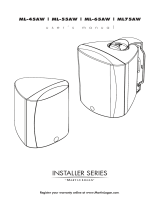 MartinLogan ML-65AW Le manuel du propriétaire
MartinLogan ML-65AW Le manuel du propriétaire
-
MartinLogan Motion XTC8 Manuel utilisateur
-
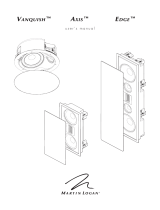 MartinLogan Axis Manuel utilisateur
MartinLogan Axis Manuel utilisateur
-
MartinLogan Motion MW4-LCR Manuel utilisateur
-
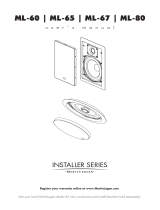 MartinLogan ML-65 Manuel utilisateur
MartinLogan ML-65 Manuel utilisateur
-
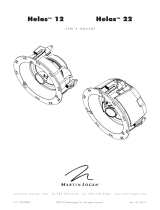 MartinLogan Helos 22 Manuel utilisateur
MartinLogan Helos 22 Manuel utilisateur
-
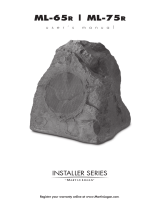 MartinLogan ML-65 Manuel utilisateur
MartinLogan ML-65 Manuel utilisateur

















































